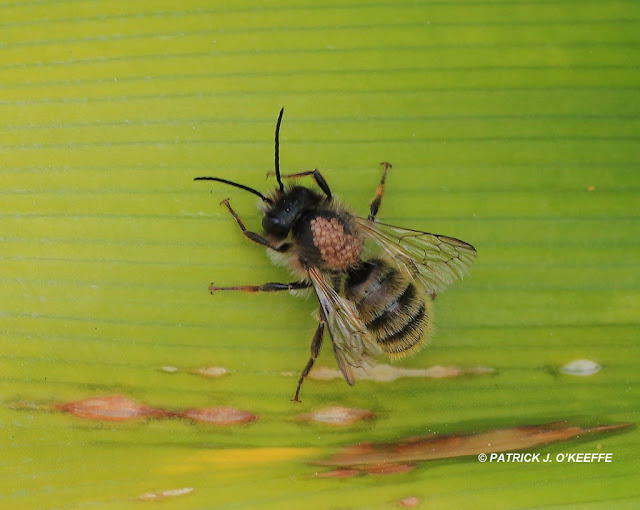Red Mason Bee (Osmia bicornis) on Green Alkanet (Pentaglottis sempervirens) and infected with Phoretic Mites
Red Mason Bee (Osmia bicornis) infected with a large cluster of Phoretic Mites
CLICK ON PHOTO TO SEE HIGHER QUALITY IMAGE
Click external link here for detailed Red Mason Bee information Click external link here for detailed Green Alkanet Wildflower information
The Red Mason Bee (Osmia bicornis) is of the family Megachilidae which is in the genus Osmia. This solitary bee commonly occurs in Europe, including Britain. It was first reported from Ireland in 2003 and has become widespread in the eastern region. The flight season extends from April into June.
Phoretic
mites form a non permanent relationship with their host. This is known
as phoresis or phoresy, in which one organism attaches itself to another
species solely for the purpose of travel to new habitat and then drop
off. In this case the phoretic mites have attached themselves to the bees thorax.
Patrick J. O'Keeffe / Raw Birds
References and highly recommended reading:
https://irishnaturalist.com/bees/red-mason-bee-osmia-bicornis/
Field guide to the Bees of Great Britain And Ireland by Stephen Falk and illustrated by Richard Lewington














